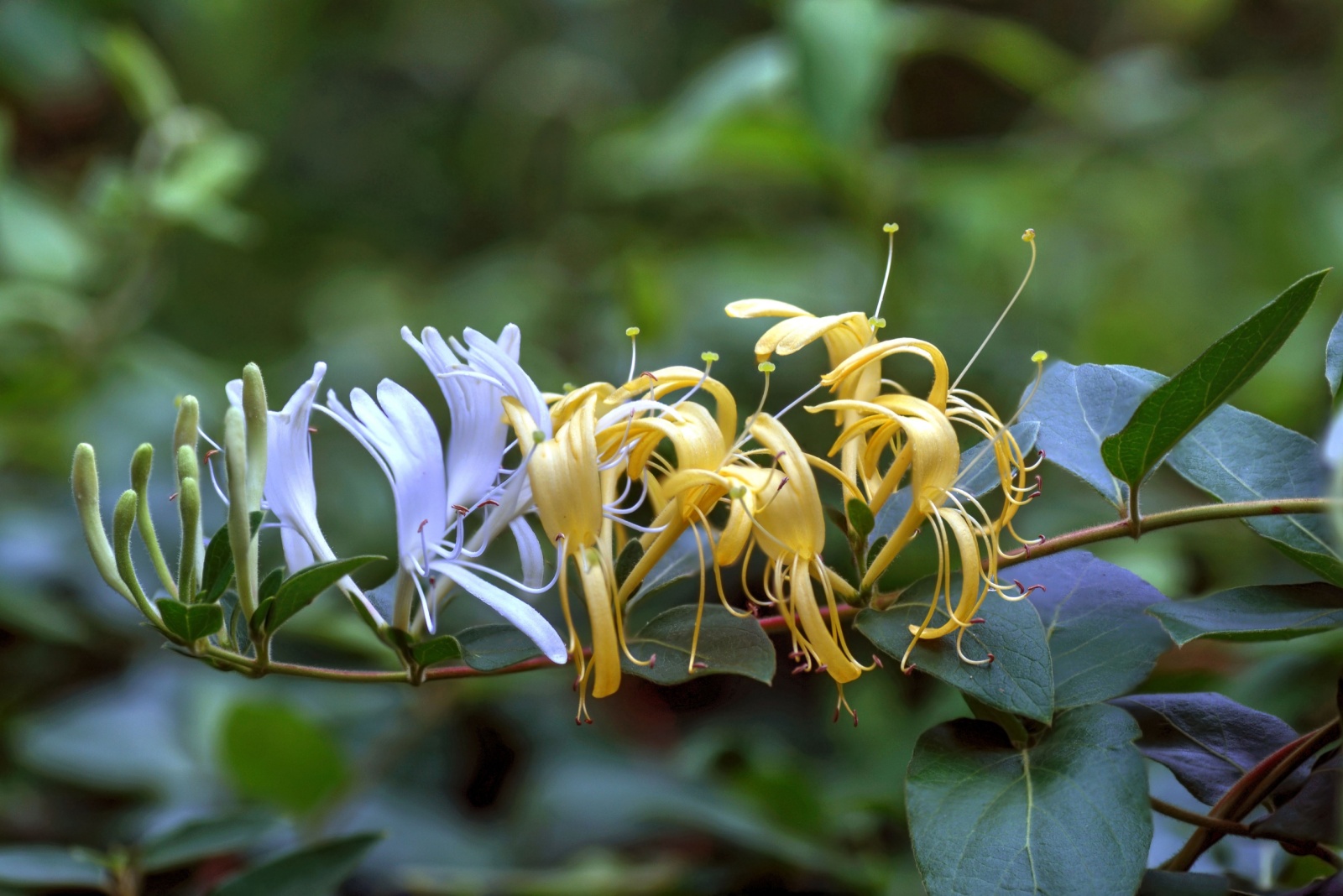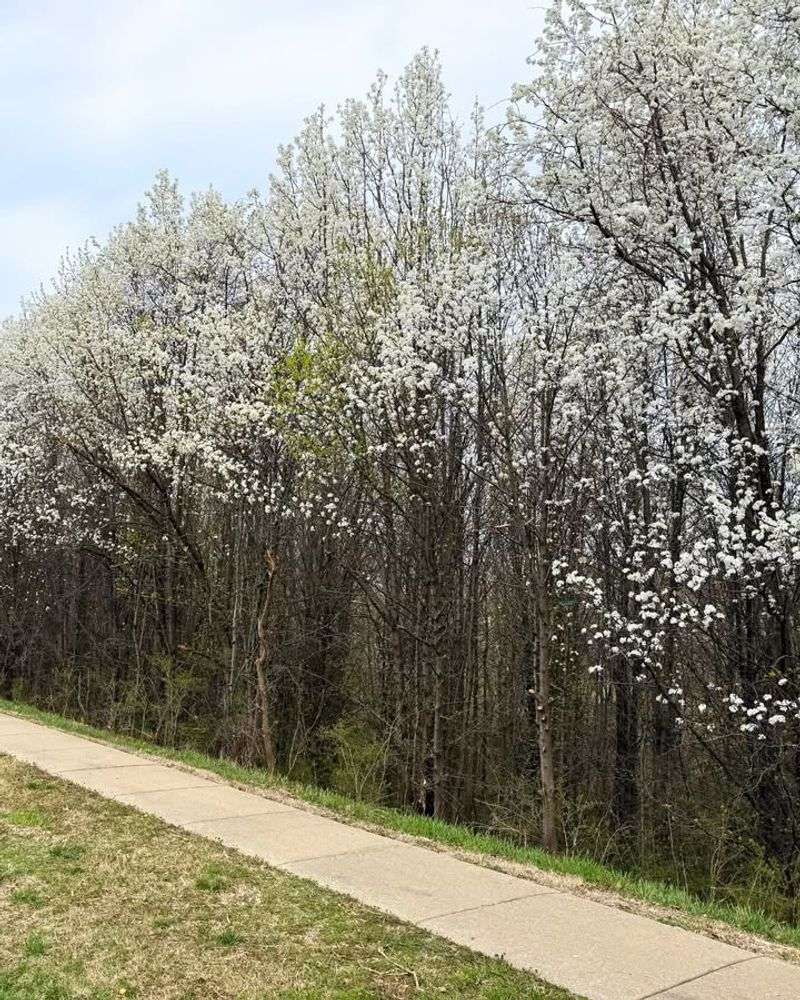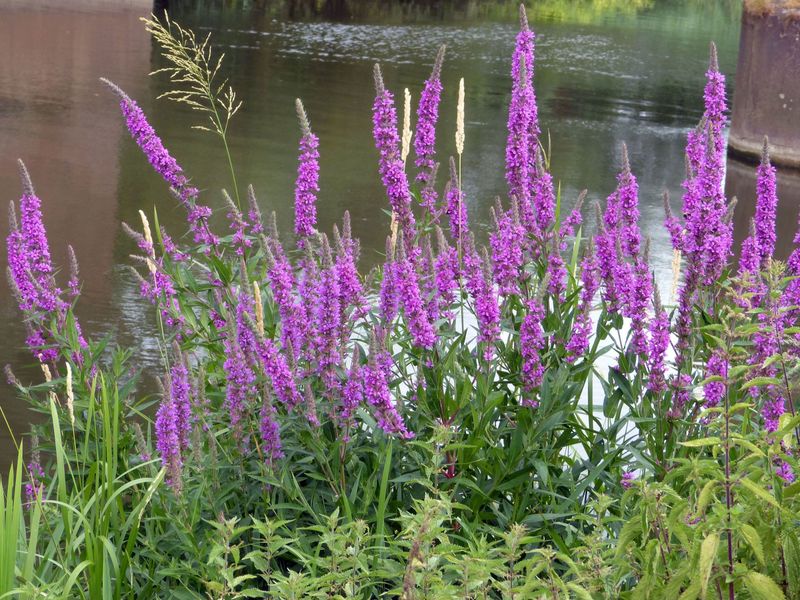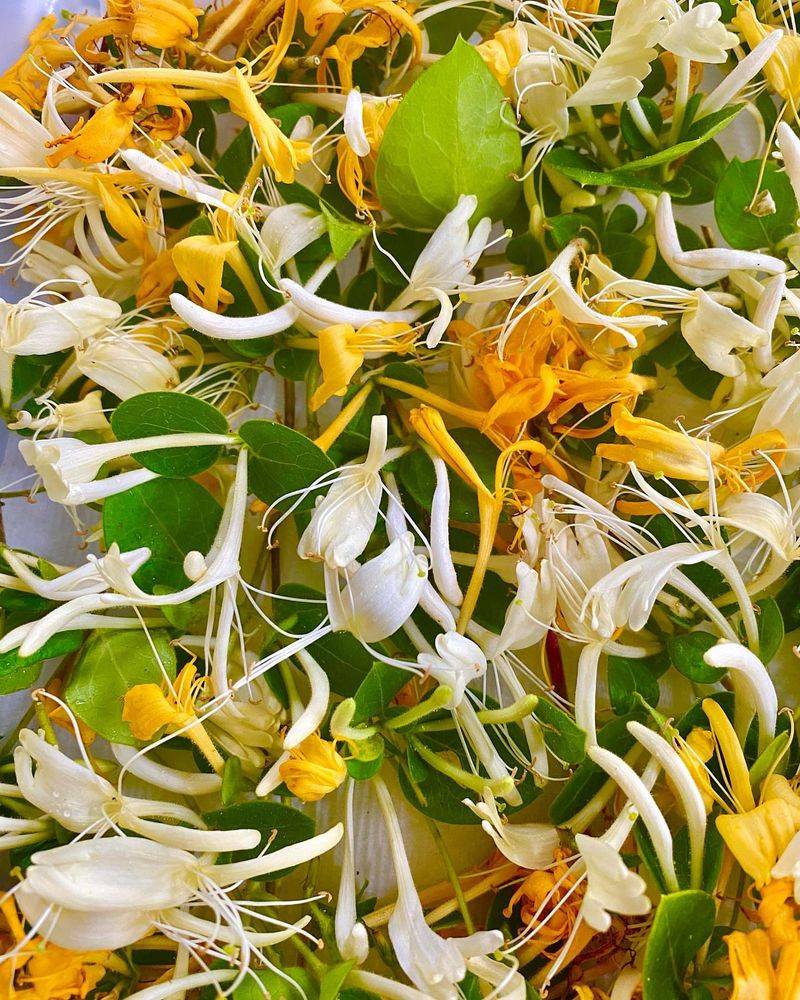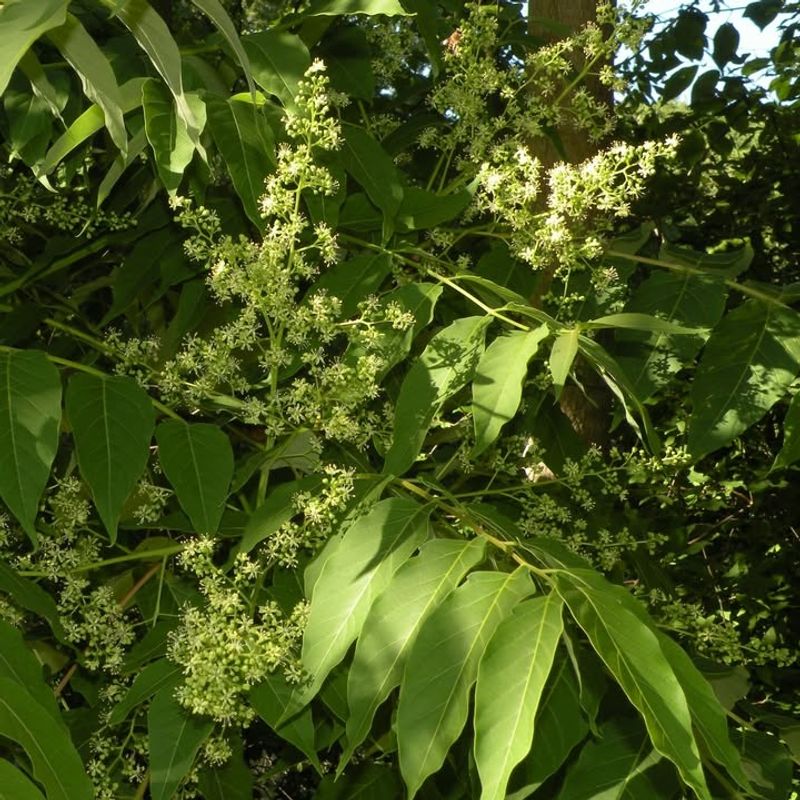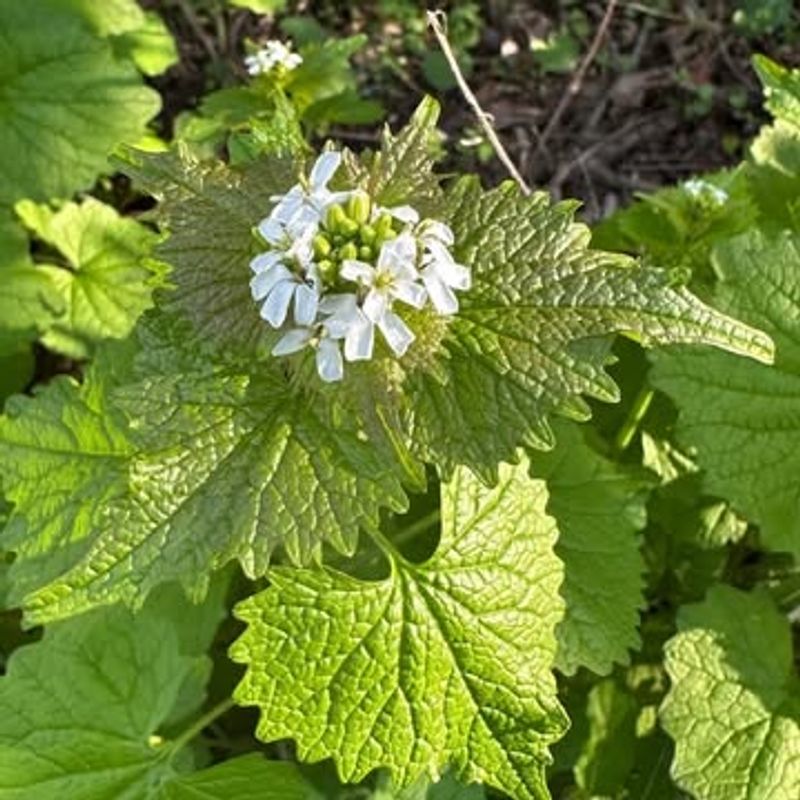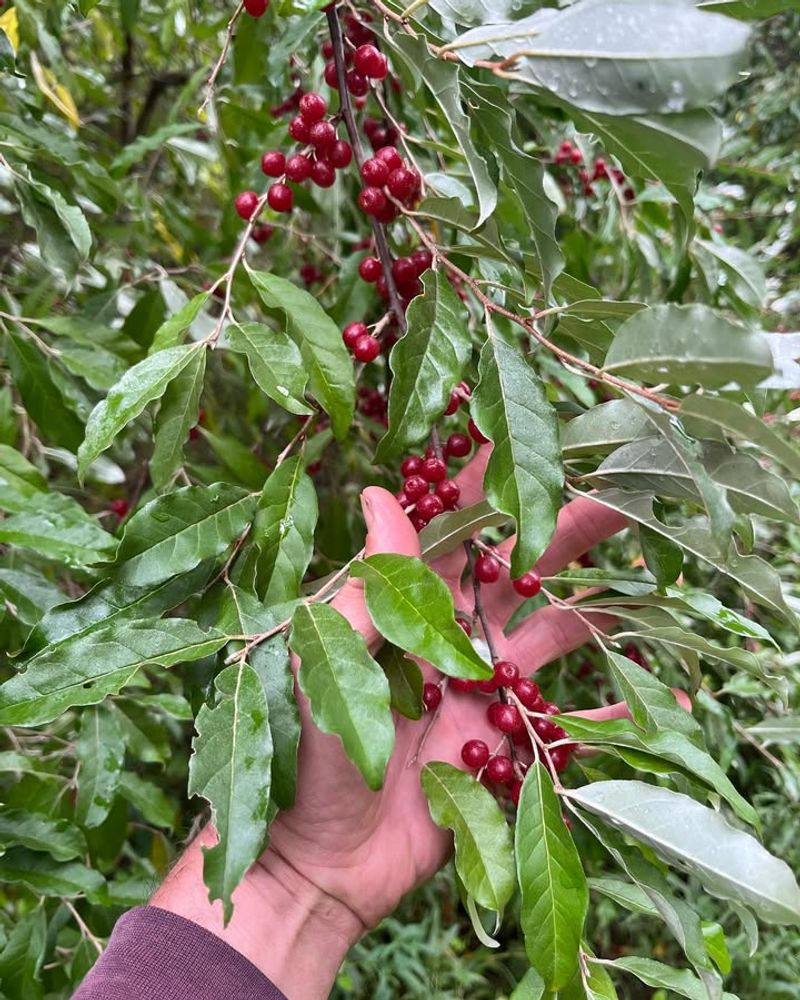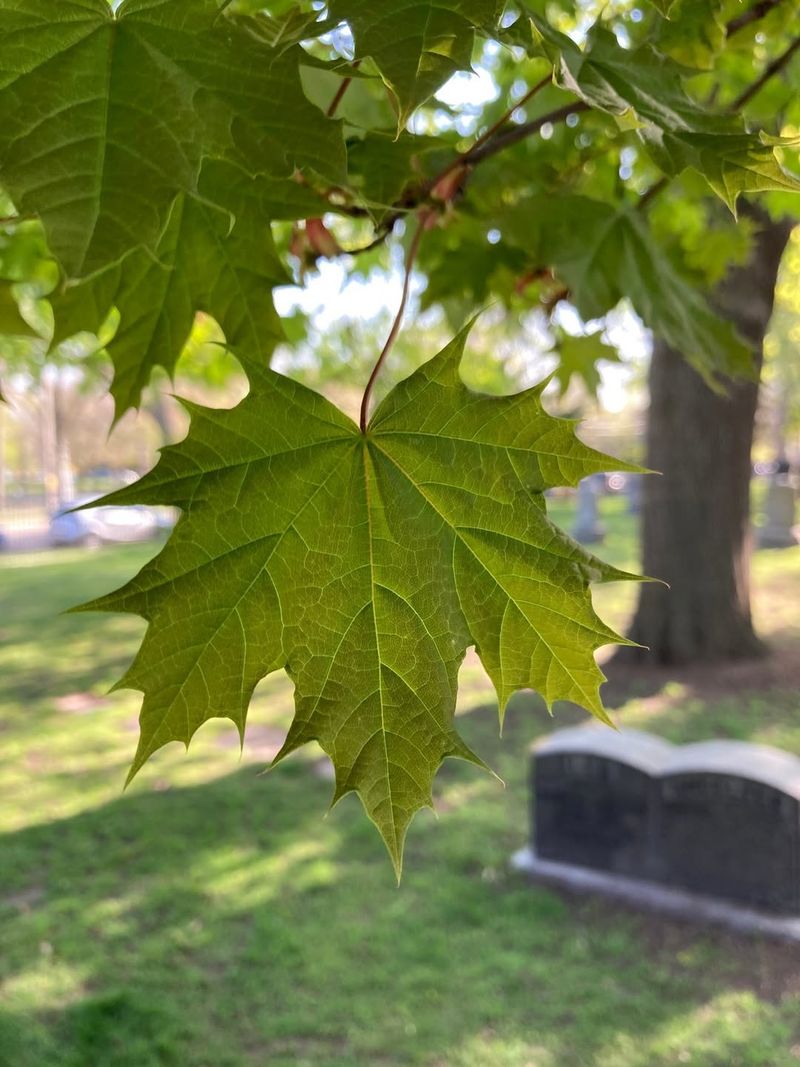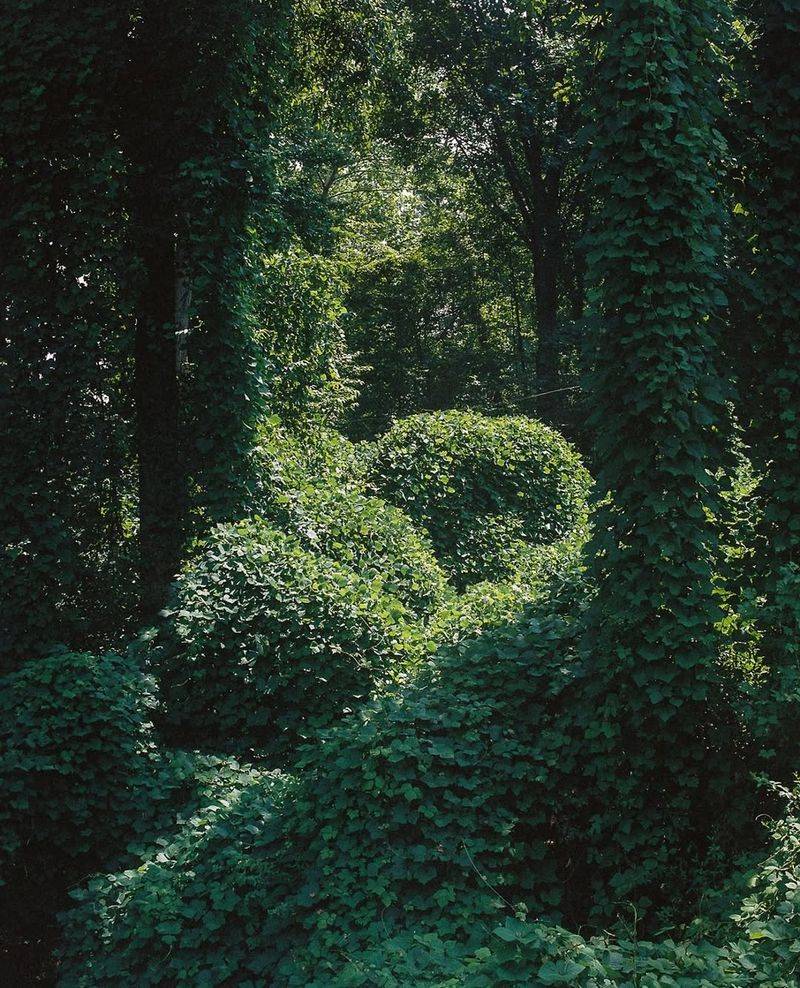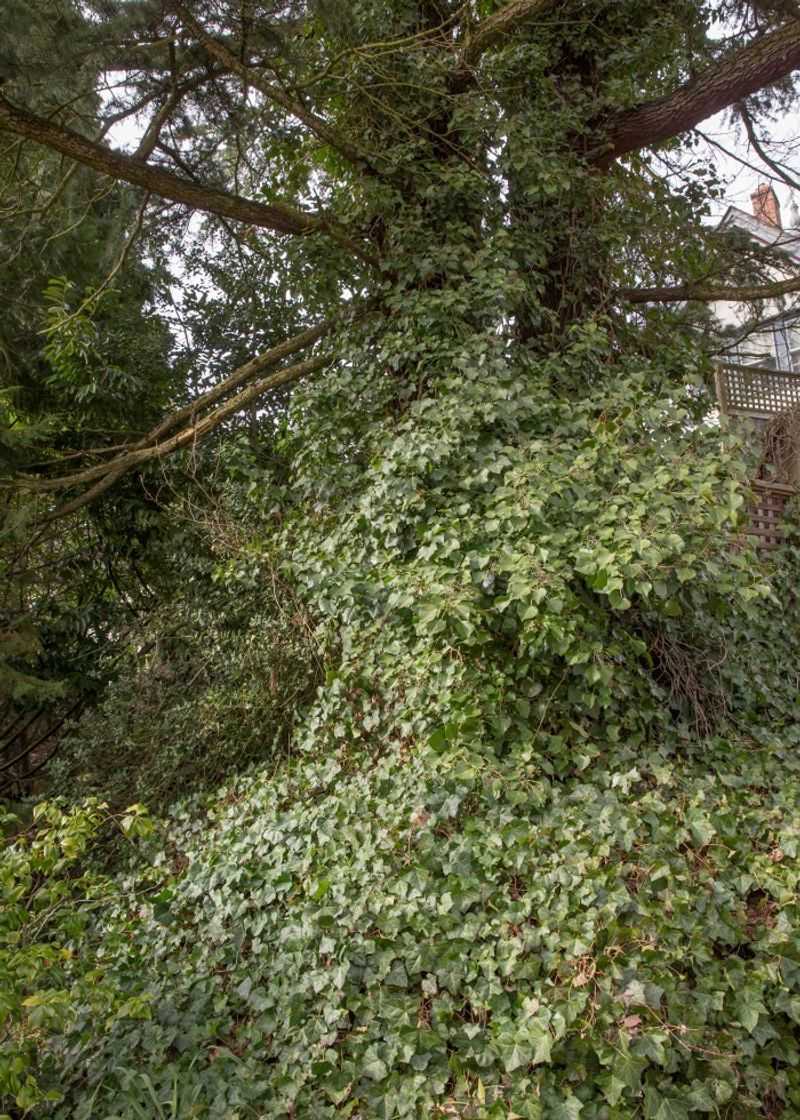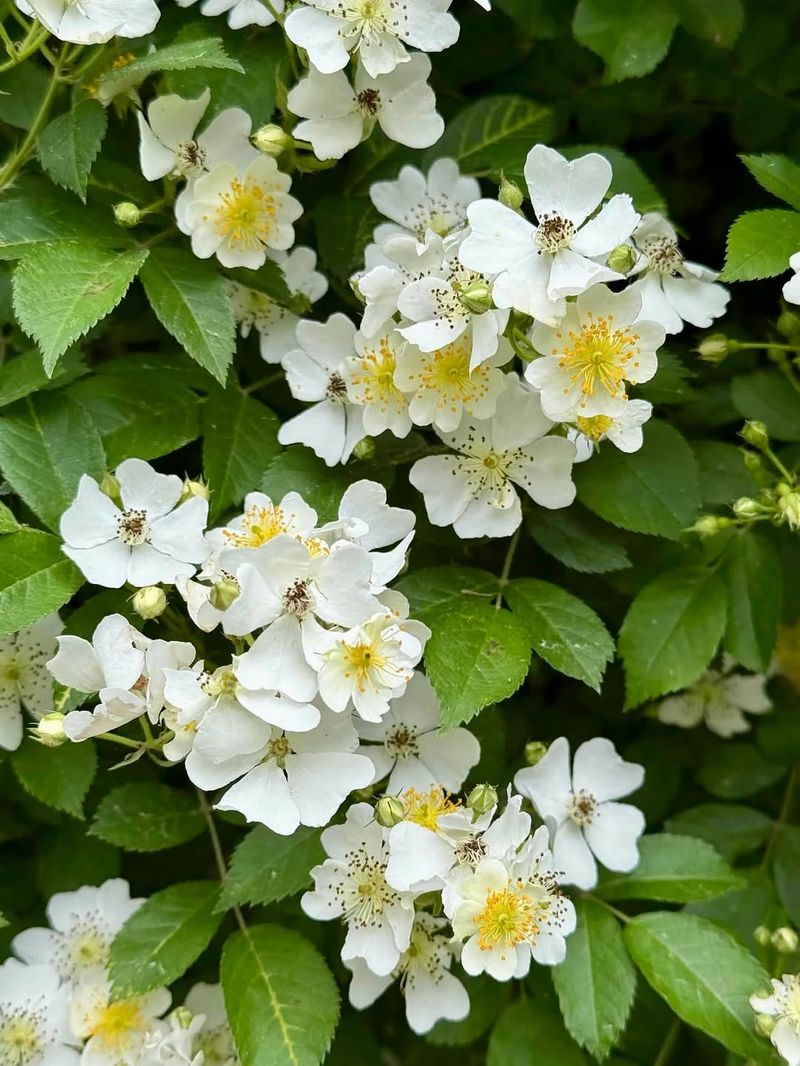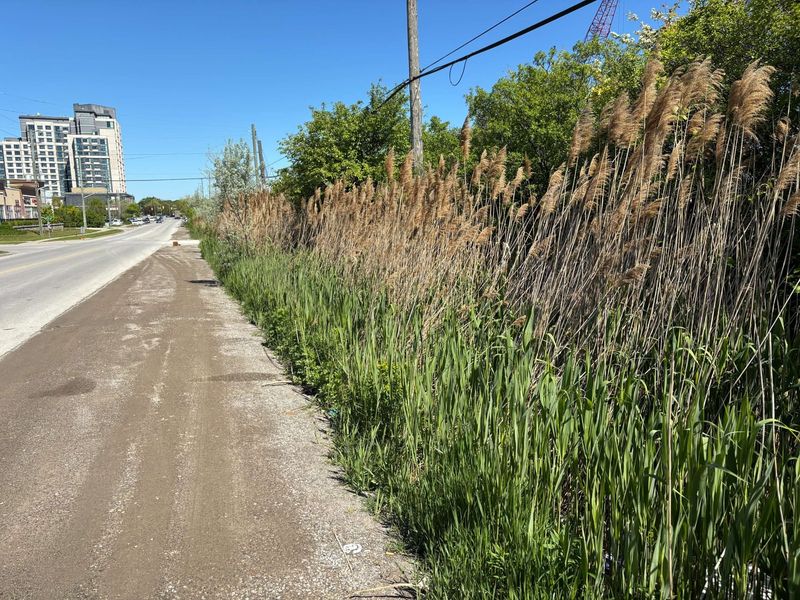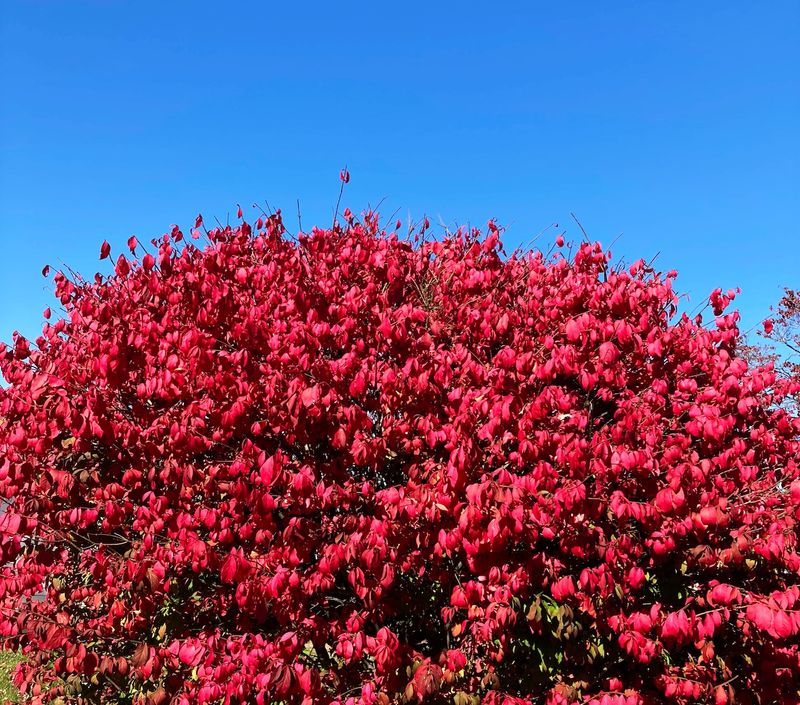Ohio suburbs are facing a growing threat from non-native plants that outcompete local species and damage ecosystems. These botanical invaders spread rapidly through neighborhoods, crowding out native wildflowers and disrupting the natural balance that local wildlife depends on.
As Ohio communities become more aware of these environmental impacts, many invasive plants are being considered for potential restrictions or bans to protect our local landscapes.
1. Bradford Pear Trees: Beautiful But Destructive
Once the darling of suburban developments, these flowering trees have worn out their welcome. Their weak branches snap easily in storms, causing property damage throughout Ohio neighborhoods.
The real problem lies in their aggressive spread. Birds eat the small fruits and scatter seeds everywhere, creating thorny thickets that choke out native plants.
Many Ohio communities are already offering trade-in programs where homeowners can swap their Bradford pears for native alternatives like serviceberry or redbud trees.
2. Purple Loosestrife Overtaking Wetland Edges
Those beautiful purple flower spikes might look innocent in your garden pond, but they’re ecological troublemakers. A single plant produces over two million seeds annually, quickly spreading to nearby streams and wetlands.
Around Ohio’s suburbs, purple loosestrife crowds out cattails and other native plants that provide food and shelter for local wildlife. The dense root systems alter water flow and drainage patterns.
Several counties already restrict this wetland invader, and statewide regulations may follow as awareness grows about its impact on Ohio’s water ecosystems.
3. Japanese Honeysuckle’s Deceptive Sweetness
Sweet-smelling flowers mask this vine’s aggressive nature. Japanese honeysuckle climbs over everything in its path, wrapping around trees and shrubs until they collapse under its weight.
Walking through older Ohio neighborhoods, you might spot entire fences and small trees completely smothered by this invader. Its semi-evergreen nature gives it an advantage over native plants that go dormant in winter.
Homeowners associations across central and southern Ohio are beginning to add this vine to their prohibited plants lists after witnessing its destructive spread.
4. Tree-Of-Heaven: The Misnamed Menace
Fast-growing and foul-smelling, this tree from Asia has become a common sight along Ohio suburban property lines and neglected areas. Its rapid growth—up to 6 feet per year—quickly transforms it from a seedling to a towering problem.
Root damage to foundations, driveways, and water lines makes it particularly troublesome for suburban homeowners. Even worse, it’s the preferred host for the destructive spotted lanternfly insect pest now threatening Ohio.
Several eastern Ohio communities have already begun removal programs targeting this species before the lanternfly problem worsens.
5. Garlic Mustard Invading Woodland Gardens
Early spring brings clusters of small white flowers and heart-shaped leaves to many Ohio suburban yards. Unfortunately, this European herb spreads rapidly under trees and in shady spots where many native wildflowers struggle to grow.
Garlic mustard releases chemicals into the soil that prevent other plants from establishing, creating a monoculture. Neighborhood nature preserves throughout Ohio suburbs have been overwhelmed by this aggressive biennial.
Community pull events have become common in many suburban areas, with families working together to remove this plant before it sets seed and spreads further.
6. Autumn Olive Shrubs Spreading Beyond Control
Silver-backed leaves and fragrant flowers make autumn olive seem like an attractive landscape choice. Suburban homeowners often planted them for privacy screens without realizing the consequences.
Birds eagerly devour the red berries, spreading seeds across Ohio neighborhoods and into natural areas. The shrubs can fix nitrogen in poor soils, giving them an advantage over native plants in disturbed areas.
Local garden centers across northeastern Ohio have already voluntarily stopped selling autumn olive, anticipating potential regulations against this rapidly spreading shrub.
7. Norway Maple Casting Too Much Shade
Look up at the street trees in many older Ohio suburbs, and you’ll likely see Norway maples lining the roads. Their dense canopy creates such heavy shade that grass struggles to grow underneath them.
The real problem comes from their prolific seed production and tolerance of urban conditions. Seedlings establish in natural areas, outcompeting native sugar maples and other forest species that wildlife depends on.
Several Columbus suburbs have already removed Norway maples from approved street tree lists, focusing instead on native alternatives that support local ecosystems.
8. Kudzu’s Creeping Northern Advance
Known as “the vine that ate the South,” kudzu has been slowly making its way into southern Ohio suburbs as our climate warms. This aggressive climber can grow up to a foot per day during summer months, completely engulfing trees, utility poles, and abandoned structures.
Once established, kudzu’s extensive root system makes it extremely difficult to control. A few isolated patches have already been discovered in Cincinnati’s southern suburbs, alarming environmental officials.
Early detection and rapid response programs are being developed by several Ohio counties to prevent this notorious vine from gaining a permanent foothold.
9. English Ivy Climbing Beyond Welcome
Classic and elegant when controlled, English ivy becomes a nightmare when it escapes cultivation. In many Ohio suburban neighborhoods, abandoned properties often showcase ivy’s destructive potential as it climbs trees and buildings.
The thick mats of vegetation harbor pests like rats and mosquitoes while providing little value to native wildlife. When ivy climbs trees, it adds weight that increases the risk of falling during storms.
Cleveland suburbs have been particularly affected, with several communities now considering restrictions on new ivy plantings while encouraging removal of existing invasions.
10. Multiflora Rose’s Thorny Takeover
Those impenetrable thickets of thorny shrubs at the edges of suburban developments aren’t native plants – they’re multiflora rose gone wild. Originally introduced for erosion control and living fences, this rose quickly jumped garden boundaries.
Each plant produces thousands of seeds that remain viable in soil for years. Birds spread the bright red rose hips throughout Ohio neighborhoods and natural areas, creating new infestations.
Suburban homeowners near natural areas often find themselves battling this thorny invader as it creeps into yards from adjacent woodlots and stream corridors.
11. Common Reed Phragmites Taking Over Drainage Areas
Those tall, feathery grasses growing in suburban detention basins and drainage ditches throughout Ohio aren’t the native plants they might appear to be. Phragmites can grow up to 15 feet tall, forming dense stands that crowd out all other vegetation.
Suburban developments are particularly vulnerable as disturbed soils and altered hydrology create perfect conditions for invasion. The plants spread through both seeds and underground rhizomes that can extend over 30 feet.
Several Ohio watershed organizations have already begun targeted removal efforts in suburban areas to prevent further spread of this wetland invader.
12. Burning Bush’s Fiery Spread Through Neighborhoods
Fall landscapes in Ohio suburbs often feature the brilliant red foliage of burning bush. Unfortunately, this popular landscape shrub doesn’t stay where it’s planted, as birds spread the colorful berries into natural areas.
The adaptable nature of burning bush allows it to thrive in both sun and shade, outcompeting native understory plants. Seedlings emerge throughout suburban yards, natural areas, and parklands.
Several northeastern Ohio communities have already restricted new plantings of burning bush, encouraging homeowners to choose native alternatives like Virginia sweetspire or blackhaw viburnum for similar fall color.

